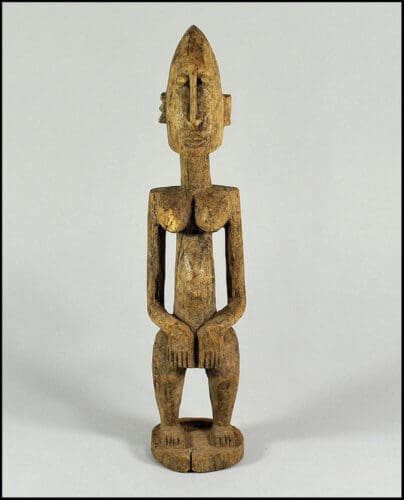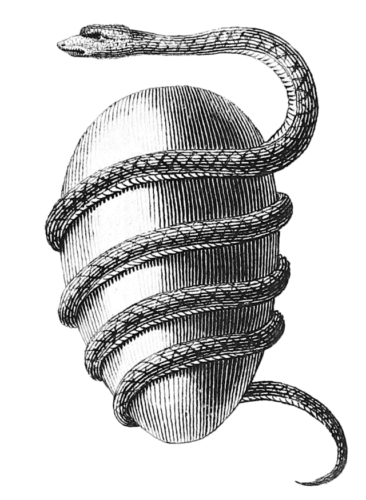Amma: The Central Deity in Dogon Cosmology
Introduction
Amma, the supreme God in the Dogon religion of Mali, West Africa, holds a pivotal place in the cosmology and mythology of the Dogon people. This essay explores the multifaceted nature of Amma, examining his role in creation, his symbolic representations, and his impact on the Dogon’s daily life and rituals.
watch to understand more about Amma, from the dogon tribe
Amma’s Role in Creation
In the Dogon belief system, Amma is the omnipotent, omniscient deity responsible for the creation of the universe. The Dogon cosmogony begins with Amma existing in a void, symbolising perfect harmony and balance. Amma embarked on the act of creation from this state of solitude, first creating the cosmic egg. This egg contained the entire universe and, when it opened, released the first organised matter, marking the beginning of time and space.
The dogon story of creation – with Amma
The Cosmic Egg and Twin Mythology
The cosmic egg, a central element in the Dogon creation story, is said to have contained two pairs of twins, known as the Nommo. These twins represent duality – a recurring theme in Dogon mythology. However, one of these twins rebelled against the order established by Amma, leading to disorder in the universe. This act of rebellion is a critical moment in Dogon mythology, as it introduces the concept of imbalance, which Amma seeks to rectify throughout the narrative.
Amma and the Earth
Following the disturbance caused by the rebellious twin, Amma created the Earth. In Dogon mythology, Earth is personified as a female figure, often referred to as Mother Earth. Amma’s relationship with the Earth is complex and intimate, symbolising the union of the sky (masculine) and Earth (feminine), a common motif in many mythologies worldwide. This union resulted in the birth of the first living creatures and established the world’s natural order.


Symbolism and Representation
He is rarely depicted in physical form in Dogon art. Instead, his presence is symbolized through various objects and symbols. One of the most significant symbols is the granary, representing the universe and Amma’s role in providing for and sustaining his creation. The granary’s architecture, with a circular base and a conical roof, echoes the structure of the cosmic egg.
The Spiritual Leader: The Hogon
In Dogon society, the Hogon is the spiritual leader who acts as a mediator between Amma and the people. The Hogon’s role is crucial, balancing the spiritual and physical worlds. He performs rituals and ceremonies to honour and ensure community harmony.
Influence on Social and Moral Order
Amma’s influence extends beyond creation myths into Dogon society’s social and moral fabric. Laws, social norms, and ethical values are all seen as divinely inspired by Amma, and adherence to these principles is essential for maintaining community harmony. This connection between the divine and the moral order underscores the theocratic nature of Dogon society.
Amma and Agriculture
Amma’s significance is also evident in the agricultural practices of the Dogon. Farming rituals and cycles are closely linked with the worship of Amma, reflecting the belief that fertility and the success of crops are gifts from the deity. This connection highlights the dependence of the Dogon people on their environment and their God for sustenance and survival.
Festivals and Ceremonies
Various ceremonies and festivals in Dogon culture are dedicated to Amma. These events are religious observances and serve as communal gatherings to reinforce social bonds and cultural identity. Through dances, masks, and storytelling, the Dogon express their reverence for Amma and pass down their traditions and beliefs to younger generations.
Amma in Modern Times
In contemporary times, the worship of Amma continues to play a vital role in the lives of the Dogon. While modern influences and changes have impacted the traditional ways of life, the reverence for Amma remains a central aspect of their identity. This enduring devotion reflects the deep-rooted nature of their spiritual beliefs and the lasting influence of Amma in their culture.
Conclusion
Amma, as the supreme deity in Dogon cosmology, is a complex and multifaceted figure whose influence permeates every aspect of Dogon life. Amma’s presence is a constant reminder of the spiritual dimensions of existence, from the creation of the universe to the daily practices of the Dogon people. His role in the mythology, social structure, and cultural traditions of the Dogon people illustrates a single deity’s profound impact on shaping the worldview of an entire community.
check out our You Tube Channel
Learn more about Jamie’s Planet Earth
Dogon, Dogon tribe, Dogon people, The Dogon, The Dogon people, The Dogon tribe, The Dogons tribe, Dogon religion, Dogon religion beliefs, Dogon spirituality, National Geographic, National Geographic magazine, Nat Geo, Nat Geo magazine, NatGeo magazine, National Geo magazine, National Geographic mag, National Geo channel, Channel National Geographic, Nat Geo expeditions, National Geographic explorer, Geographical magazine, Dogon culture, Dogon cosmology, Dogon rituals, Dogon masks, Dogon cliff dwellings, Dogon Sirius mystery, Dogon ceremonies, Dogon art, Dogon mythology, Dogon architecture, Dogon astronomical knowledge, Dogon language, Dogon textiles, Dogon village life, Dogon ancestral figures, Dogon ceremonial dances, Dogon handicrafts, Dogon agriculture, Dogon history, Dogon social structure, Dogon traditional music, Dogon cliff villages.
